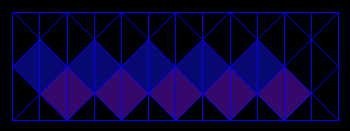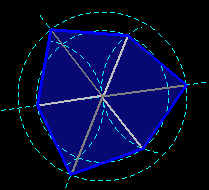For n=3 we get... the cube.
The net is a "zigzag" of squares extracted from the IsoAxis grid.
 net for n=5, that is 20 faces
net for n=5, that is 20 faces
(it has to be folded alternatively in each way)
This sequence of "plexagons" has been described by Paul Bourke: the nets of these polyhedra are made of two identical hexagons. To build the polyhedron, pleat the hexagons as shown below, turn one up-down and rotate it by 60° and assemble the two pieces.

The animation modifies the radius of the external circle in the drawing.
